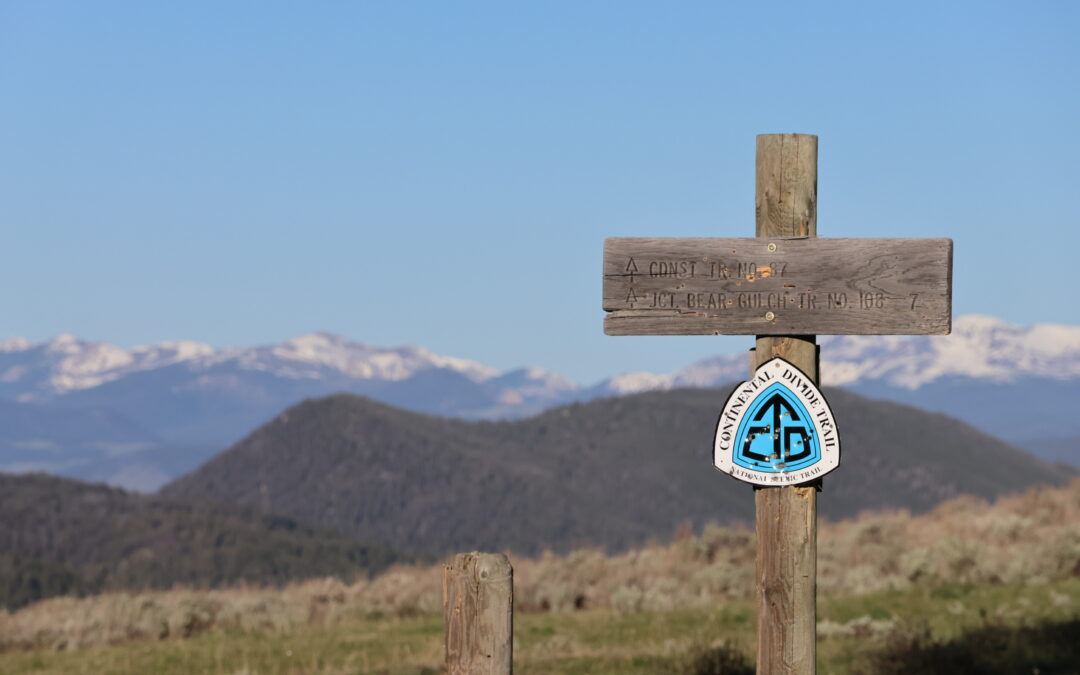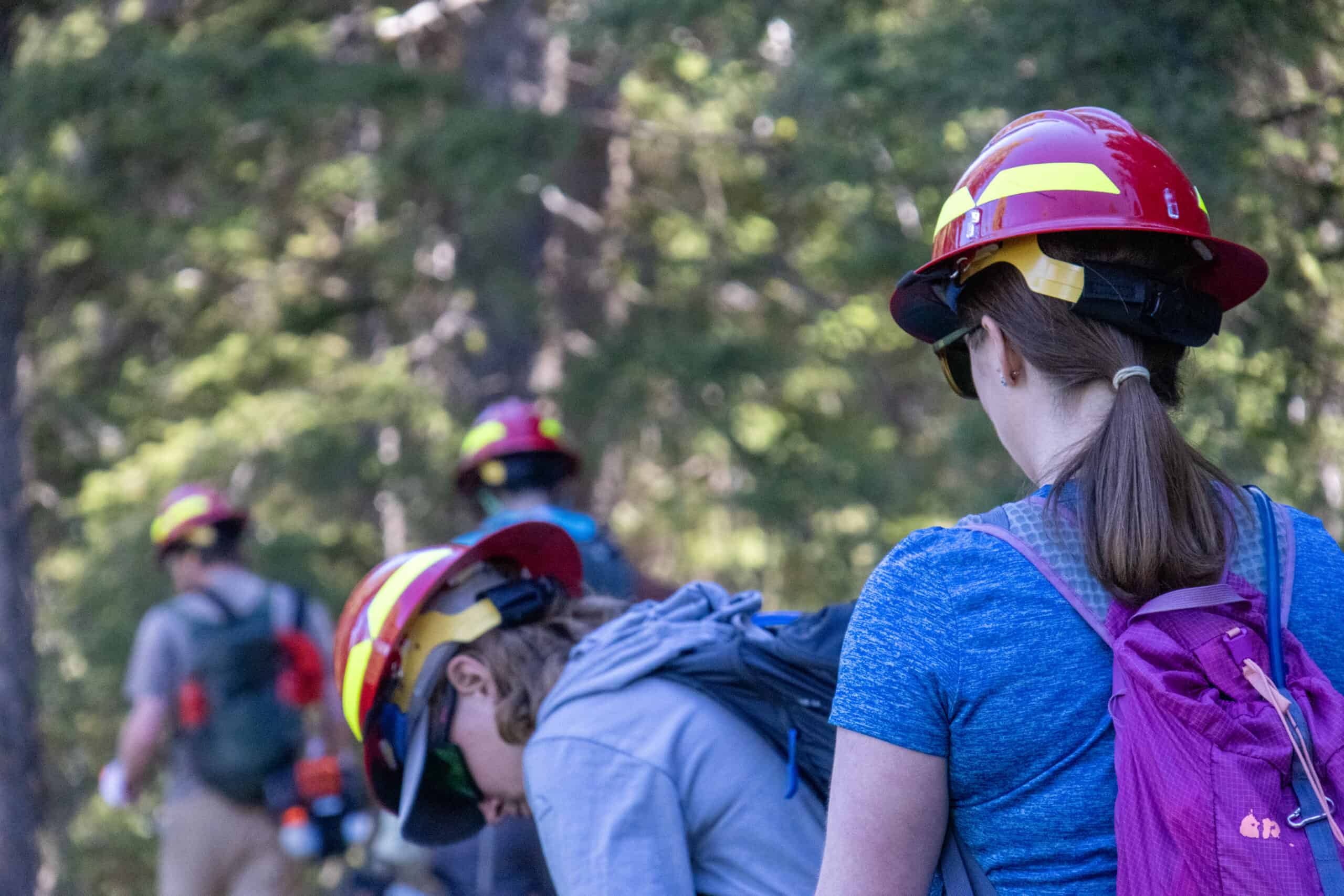
Highlights from the Highlands | On the Trail for Pete Sorini Day
By Jen Ambrose (she/her) and Ryan Victor (he/him)
The sun was shining at southwest Montana’s Highland Trailhead on June 8 – good news for us and the dozen or so other volunteers who’d gathered for Pete Sorini Day, an annual early-season volunteer day dedicated to clearing a section of the Continental Divide Trail near Butte.
The Origins of Pete Sorini Day
A Butte-born neurosurgeon and CDT enthusiast, Dr. Peter Sorini spent decades practicing medicine and hiking trails all throughout Montana. After his tragic passing due to a self-diagnosed glioblastoma at the age of 56, Pete’s loved ones knew how they wanted to honor him: by adopting his favorite section of the CDT in his name.
Pete Sorini Day is now an annual event, gathering volunteers to help clear and maintain that section of the trail in the Beaverhead-Deerlodge National Forest every June.
Our Volunteer Experience
Excited for the chance to get involved in Montana’s outdoor community (and for any excuse to get outside), we drove from Great Falls down to the Highland Trailhead near Butte to participate in this year’s event, the 9th Annual Pete Sorini Day.
Our morning began at the trailhead with a chance to fuel up on caffeine and donuts while getting acquainted with our fellow volunteers and staff from the CDTC, Wild Montana, and the U.S. Forest Service. We were a diverse group, in terms of both age and experience – from people in their 20s to those in their 80s, and from a former trail maintenance crew member who’d previously hiked the CDT to, well, us (who had never done any type of trail work and only stepped foot on the CDT once before).
Work officially started by divvying up tasks, dividing into a few groups, and getting outfitted with the requisite safety glasses, hard hats, gloves, and earplugs. We learned about the different tasks that needed to be done and the various tools that are used for trail maintenance, and then headed out to different starting points to get to work.
Since we’re new to this type of work, we chose tasks that sounded less technical, joining the second group on our section of the trail. Up ahead of us was a sawyer from the USFS, who used a chainsaw to cut larger logs blocking the trail, and some swampers, who followed behind to remove the cut logs. Ryan led our group with a brush saw, cutting back bushes and twigs, while Jen and other volunteers followed to clear the cut brush from the trail.
Some parts of the trail were already mostly cleared, allowing us to hike faster (and giving our upper bodies a welcome break). Other sections needed more extensive work, and we moved slowly to get everything cleared as we walked. When the sawyer encountered more obstacles to clear, we periodically caught up to the first group, forcing us to pause – and giving us a chance to chat about everything from past hiking and travel experiences to our collective love of the Butte/Anaconda area to ongoing activism efforts in Montana. And that’s the dance of trail maintenance: hike, clear, wait, hike, wait, hike, clear.
“Working on a project like this for the first time was a huge learning experience. We became proficient in the vocabulary of trail maintenance, tried our hand at operating new tools, and got familiar with the many types of tasks that go into maintaining a trail.”
Highlights From the Highlands
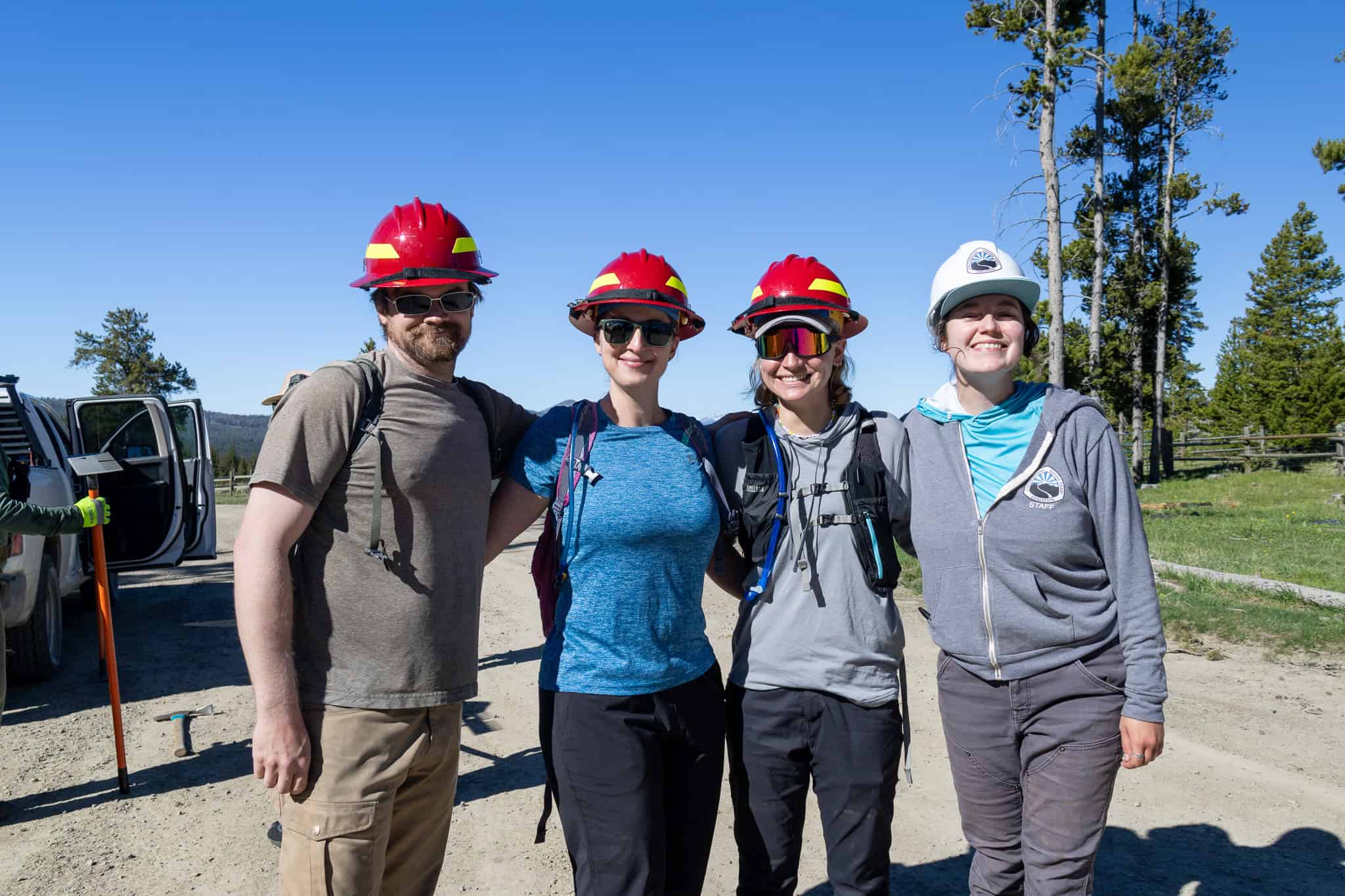
“…we’ve benefitted from the massive efforts of others to develop and maintain the many trails we’ve enjoyed over the years. Volunteering on a trail maintenance project was a chance for us to finally pay it forward.”
The Many Benefits of Giving Back
Hiking is one of our biggest passions, and we’ve benefitted from the massive efforts of others to develop and maintain the many trails we’ve enjoyed over the years. Volunteering on a trail maintenance project was a chance for us to finally pay it forward. But as with most volunteer experiences, we also reaped many benefits ourselves, far beyond the satisfaction of a job well done.
Working on a project like this for the first time was a huge learning experience. We became proficient in the vocabulary of trail maintenance, tried our hand at operating new tools, and got familiar with the many types of tasks that go into maintaining a trail.
As long-time hikers without much experience mountain biking or horseback riding, it also opened our eyes to how others might use the trail. While a low canopy covering the trail provides nice shade for people on foot, it creates a dangerous obstacle for those on horseback. Similarly, the face of a large cut log alongside the trail tells hikers they’re going the right way, but it can spook a horse, with disastrous consequences.
But what perhaps made the biggest impact was seeing how much goes into maintaining hiking trails, including the ones we’ve used for years, often without a second thought as to how they got there. That realization also painted a clearer picture that, although people often hike in an effort to connect to nature, trails aren’t really all that natural – making it feel all the more important for us as hikers to minimize our impact on the environments we traipse through.
It was also inspiring to realize through this experience how extensive the CDT community is and how much it connects the Mountain West, from New Mexico all the way up to Montana. And it’s fun to think about the CDT thru-hikers who will come through on this exact section of trail later this year, as they near the end of their epic adventure.
Besides the new knowledge and perspectives we gained, our volunteer experience introduced us to a big group of like-minded people from around Montana, and we loved getting to know some of them while we worked.
We were also hugely appreciative of the afternoon BBQ that was provided, which was a really fun way to end the day – and of the swag that was given away! We took home a PACT Lite Bathroom Kit, touted as “the easiest, most sustainable way to poop in the backcountry.” We’re very curious to try out the fungi tabs (which help poop break down faster) and the dehydrated wet wipes on our next camping trip!
Aside from the perks, we loved that the project took us to a section of the CDT that we probably would never have visited otherwise – and there’s no denying it was just a great day out on the trail.
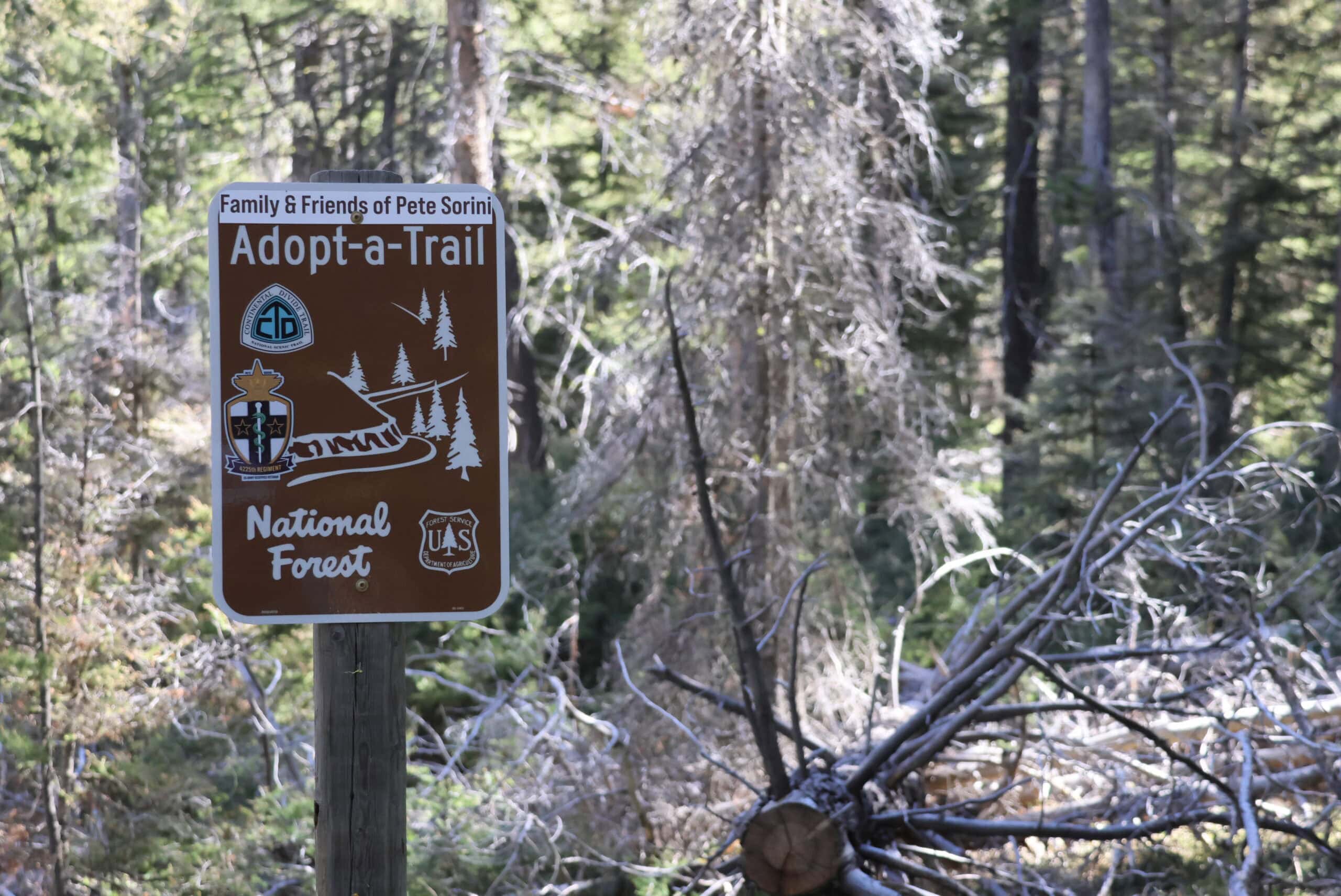
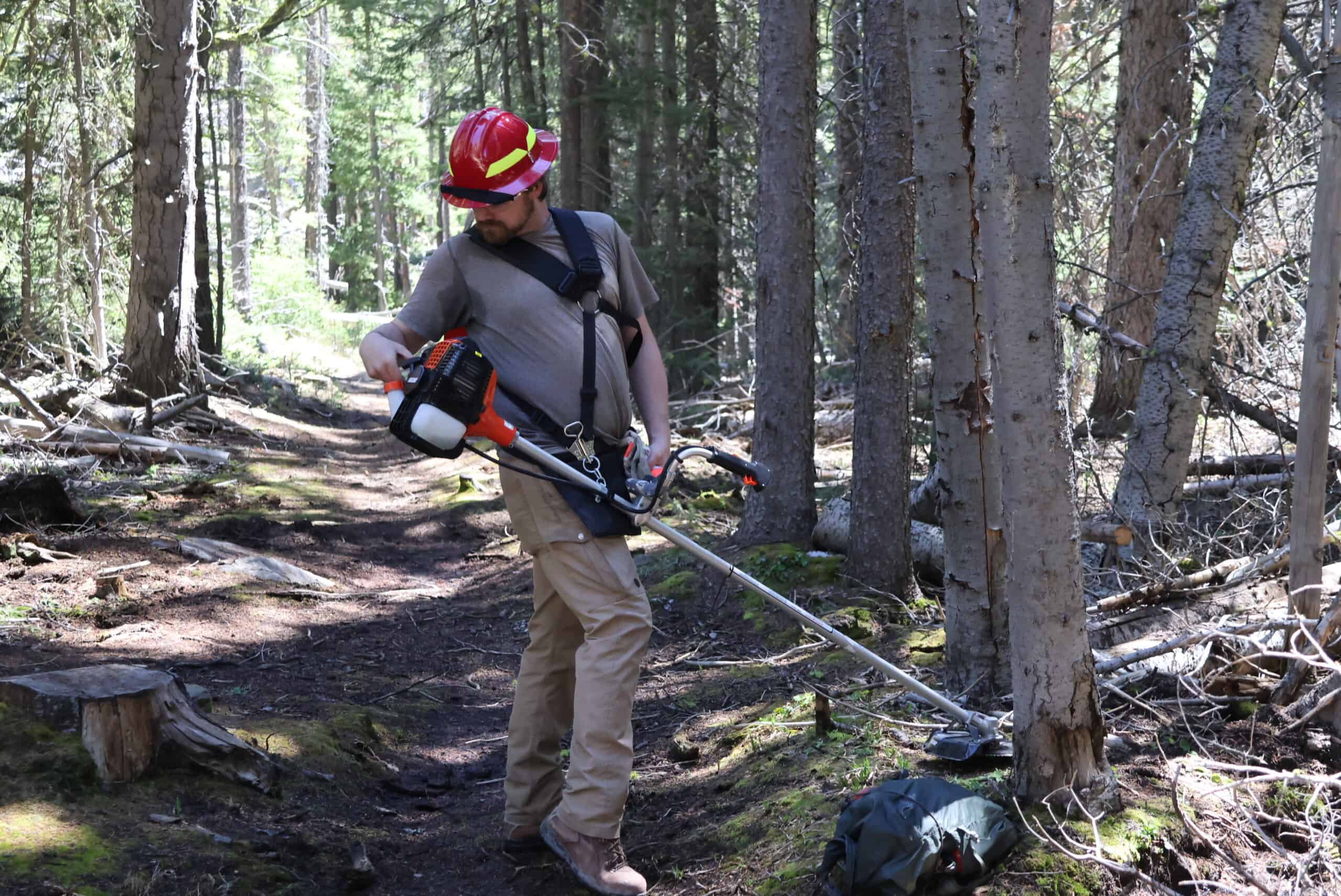
Volunteering in Trail Maintenance
Pete Sorini Day is just one of many opportunities to volunteer along the CDTC, although some projects require long hikes into the backcountry, more strenuous work, and a multi-day commitment. For first timers, a lower-intensity, one-day project like this is perfect for getting your feet wet and starting to learn the basics of trail maintenance.
Before this experience, we weren’t sure what trail maintenance would entail or who would be able to do it. But now, we can say this: if you can hike, you can volunteer! It involves a wide range of tasks, which means there are options for everyone – some use power tools or require strength or technical knowledge, but many others do not.
We also learned a lot about how to have a great volunteer experience.
Tips for Volunteering on a Trail Project
- Come prepared to get your hands dirty
- Be willing to ask questions (even if they feel like dumb ones)
- Be proactive about finding tasks to do
- Get help figuring out what tasks are best for you
- Wear your safety equipment
- Be willing to try new things
- Read up on the basics of trail maintenance beforehand
- Be prepared for any type of conditions (including sun, heat, wind, rain, and mud)
- Enjoy connecting with your fellow volunteers
- Don’t forget your water and snacks
Not finding a volunteer project in your area or one that fits your schedule? You can still do your part to be a responsible steward of the CDT, or any trails you use. Stay on the designated trail, pack out your garbage, don’t damage the markers, and of course, poop responsibly!

